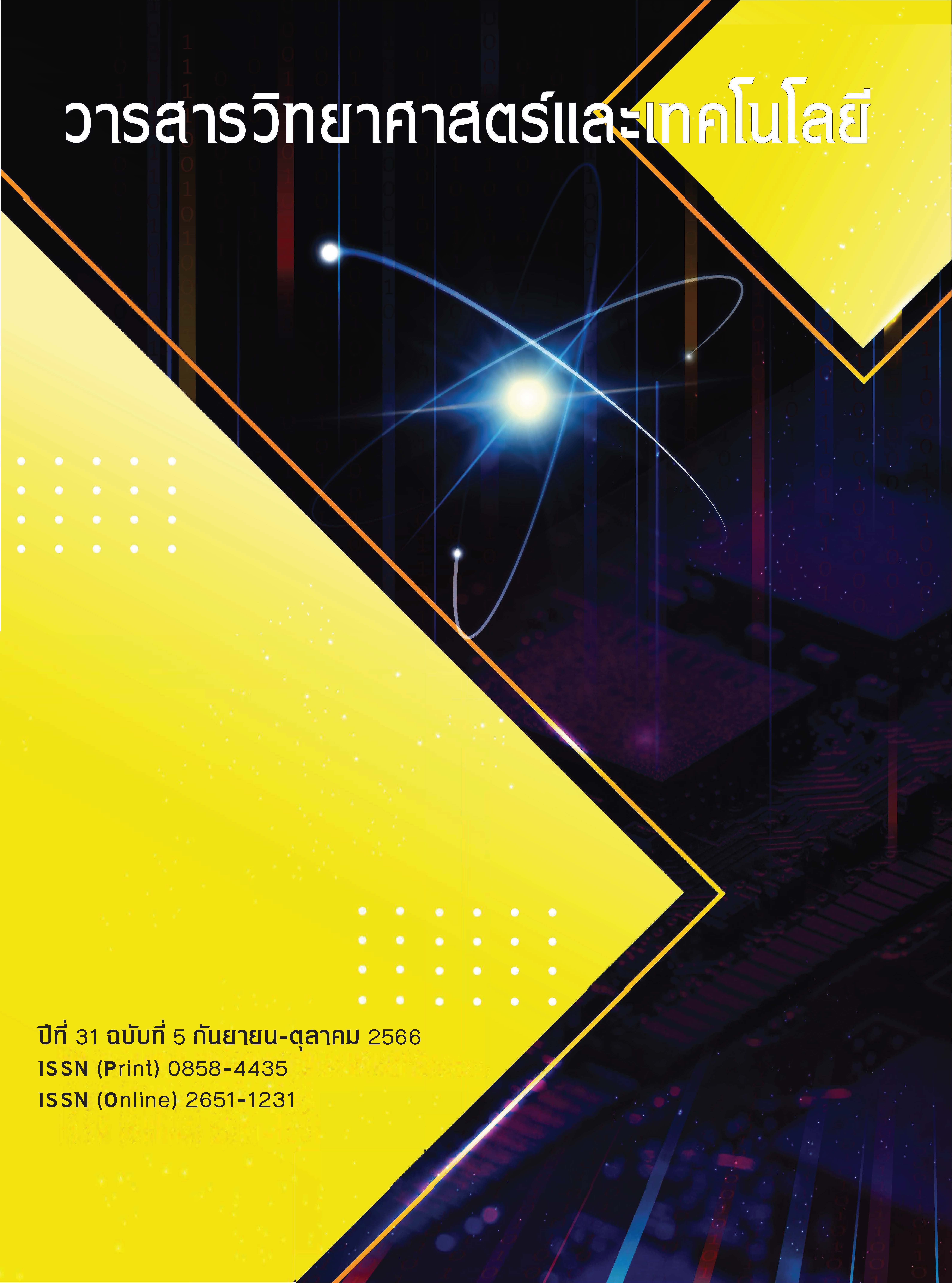Production of Activated Carbon from Corncob by Combined Phosphoric Acid and Carbon Dioxide Activation
Main Article Content
Abstract
The objective of this research is to investigate an alternative approach to producing activated carbon from corncob through single-stage physical-chemical activation using phosphoric acid and carbon dioxide as assistive agents. The combined pyrolysis and activation process was studied by varying temperatures between 600 and 800 oC and time between 2- and 4-hour activation periods. The results confirm expectations in terms of product yield and physical properties with optimal condition of 0.1 molar acid concentration at 800 oC temperature and 2 hours retention period. The produced substance yields BET surface area of 825 m2/g with an iodine number of 546.76 mg/g which is well in the range of commercial grade activated carbon available in Thailand.
Article Details
References
Office of Agricultural Economics, Agricultural Production, Available Source: https://www.pcd.go.th/publication/26626, April 17, 2023. (in Thai)
Dussadee, N., Suankhamkong, A., Thararak, C. and Homduang, N., The Study of Using Biomass in Economic Department and Unuse Biomass, Available Source: https://tarr.arda.or.th/preview/item/tX3MSRS_GPlzSC9xXvDFl, April 17, 2020. (in Thai)
Tseng, R.L. and Tseng, S.K., 2005, Pore Structure and Adsorption Performance of the KOH-Activated Carbons Prepared from Corncob, Journal of Colloid and Interface Science, 287: 428-437.
Hayashi, J., Kazehaya, A., Muroyama, K. and Watkinson, A.P., 2000, Preparation of Activated Carbon from Lignin by Chemical Activation, Carbon, 38: 1873-1878.
Youme, P., 2015, Preparation of Activated Carbon with High Surface Area from Wood Charcoal Powder by Chemical Activation, KKU Sci. J. 43(4): 788-798. (in Thai)
Youme, P., 2015, Preparation of activated carbon with High Surface Area from Wood Charcoal Powder by Dry Chemical Activation, KKU Science Journals, 43(4): 788-798. (in Thai)
Chuengsaman, T. and Atsawasaengrat, P., 2016, Synthesis Activated Carbon from Coffee Residue by Using Microwave Radiation, Ladkrabang Engineering Journal, 33(1). (in Thai)
Zhu, G.Z., Deng, X.L., Hou, M., Sun, Kang., Zhang, Y.P., Li, Ping. And Liang, F.M., 2016, Comparative Study on Characterization and Adsorption Properties of Activated Carbons by Phosphoric Acid Activation from Corncob and its Acid and Alkaline Hydrolysis Residues, Fuel Processing Technology, 144: 255-261.
Gebreegziabhera, T.B., Wang, S. and Nam, H., 2019, Adsorption of H2S, NH3 and TMA from Indoor Air using Porous Corncob Activated Carbon: Isotherm and Kinetics Study, Journal of Environmental Chemical Engineering, 7: 103234.
Li, Z., Niu, S., Liu, J. and Wang, Y., 2022, Solid Fuel Production from Co-hydrothermal Carbonization of Polyvinyl Chloride and Corncob: Higher Dechlorination Efficiency and Process Water Recycling, Science of The Total Environment, 843: 157082.
Donar, Y.O., Çağlar, E., and Sınağ, A., 2016, Preparation and Characterization of Agricultural Waste Biomass Based Hydrochars, Fuel, 183: 366-372.
Inagaki, M., Park, K. C. and Endo, M., 2010, Carbonization under Pressure. New Carbon Materials, 25(6): 409-420.
Liu, H.-M., Li, M.-F. and Sun, R.-C. 2013, Hydrothermal Liquefaction of Cornstalk: 7-Lump Distribution and Characterization of Products, Bioresource Technology, 128: 58-64.
Katakanit, P., 2019, Hydrochar and Char Pellet Production from Hydrothermal Carbonization of Organic Wastes, Chiang Mai University, Chiang Mai, 120 p. (in Thai)
Thai Industrial Standards Institute, Thai Industrial Standard Activated Carbon, Available Source: http://www.fio.co.th/web/tisi_fio/fulltext/TIS900-2547.pdf, April 17, 2023. (in Thai)
Miaowski, A., Owczared, M. and Marecka, 2007, A. Surface Area of Activated Carbon Determined by the Iodine Adsorption Number, Energy Sources, 29: 839-850.
Thai Industrial Standards Institute, 2547, TIS 900-2547: Activated carbon, 121(79), p. 8. (in Thai)


